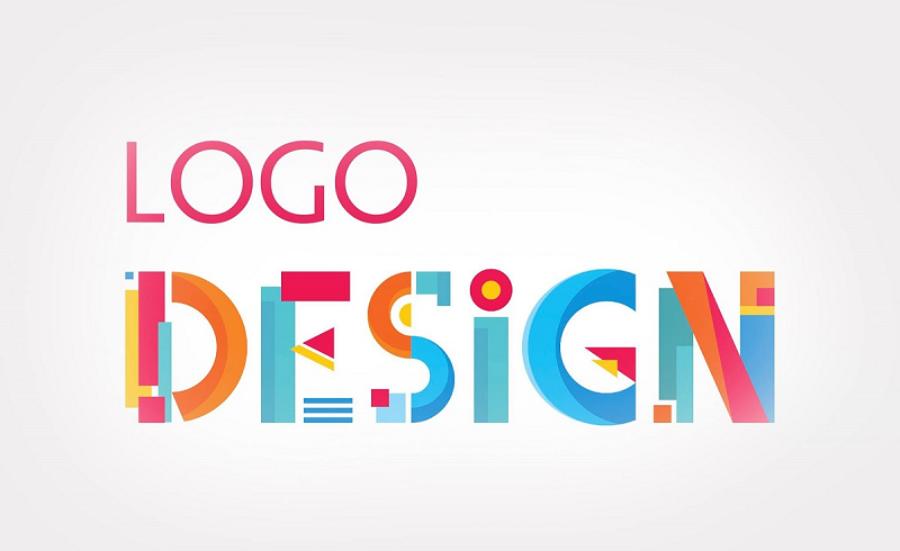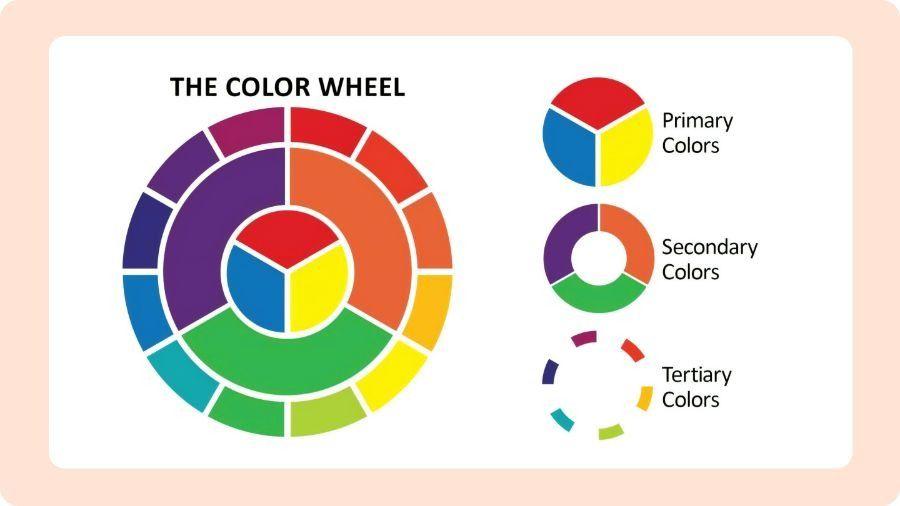Best Selling Products
Professional Logo Design: Factors to Consider
Nội dung
- 1. What is a logo in brand strategy?
- 2. Simplicity – The first and mandatory element
- 3. Recognizability and memorability
- 4. Cross-platform flexibility
- 5. Color – A Powerful Visual Language
- 6. Typography – The element that conveys brand personality
- 7. Industry suitability
- 8. Sustainability over time
- 9. Emotional Element – Connecting with Users
- 10. Professional Logo Design Process
- 10.1. Brand Research: Understanding From the Roots
- 10.2. Market Analysis: Understanding the Competitive Landscape
- 10.3. Ideas & Sketches: The Source of Creativity
- 10.4. Design & Finishing: Fine-tuning to Perfection
- 10.5. Practical Application: Ensuring Feasibility
- 10.6. Handover & User Guide: Empowerment and Ensuring Consistency
- 11. Conclusion
A logo is more than just a visual symbol; it conveys a brand’s identity. Analyze the core elements that make up a quality logo design, its ability to apply emotion and identity strategy.

In the world of brand identity, a logo is not only an image but also the “face” of a business. To create a good logo design, the designer cannot rely solely on personal aesthetic taste but must understand many professional factors and brand thinking. Below, sadesign comprehensively summarizes the elements that make up a quality logo design that any professional designer needs to keep in mind.
1. What is a logo in brand strategy?
A logo is more than just a pretty image. It is the result of research, analysis and creativity to convey the core values, vision and personality of a brand. A good logo should be unique, easily recognizable and memorable, and adaptable across multiple media platforms.
(1).jpg)
In branding strategy, the logo acts as the first point of contact between the brand and the public. It is a symbol that helps customers distinguish one brand from another. In addition, the logo also contributes to maintaining consistency in image communication, building trust and professionalism in the eyes of customers.
It is not just a visual image but also a tool to help businesses build recognition, create an impression and leave a mark in the minds of consumers. A professionally designed and suitable logo will contribute to enhancing brand value, strengthening customer trust and creating a difference in the competitive environment. Therefore, investing in logo design is not just a small part but a strategic step in building and developing a sustainable brand.
2. Simplicity – The first and mandatory element
Simplicity has always been a fundamental principle in logo design. A complex logo with too many details can easily confuse viewers and make it difficult to remember. Meanwhile, a simple logo helps increase brand recognition and memorability.
Simplicity does not mean monotony. It requires the designer to distill the essence, retaining the most valuable elements in terms of image and meaning. Globally successful logos such as Apple, Nike or McDonald's all pursue the spirit of simplicity but are full of visual and content weight. Minimalism makes the logo more flexible when applied on many different platforms and sizes, while ensuring professionalism and longevity in building brand image.
3. Recognizability and memorability
Logos play an important role in building brand image, because they are not only a representative symbol but also help create recognition and memorability in the minds of customers. A professionally designed logo, consistent with the core values of the business, will contribute to enhancing the ability to connect with the target audience and affirm the brand's position in the market.
(1).jpg)
A good logo design should be easily recognizable even when scaled down or at a glance. High recognition means consumers can recall the brand in a short time and easily differentiate it from other competitors.
To achieve this, designers need to understand basic geometry, use negative space wisely, and choose colors and shapes that are unique to the brand. The ability to "imprint in the memory" is the factor that creates long-term brand strength.
4. Cross-platform flexibility
A quality logo can’t just look good on paper. It needs to be versatile: from business cards, signs, websites to social media platforms. The ability to scale, invert colors, and display well at different sizes are mandatory.
Designers need to prepare many versions of the logo such as: main logo, reduced logo (icon), black and white logo, negative/positive logo... This helps the brand be flexible in communication, especially when working with printing or digital marketing.
Logos need to be designed with high flexibility, ensuring visibility and adaptability across different platforms, from digital interfaces such as websites, mobile applications, to printed materials such as business cards, posters or signs. This not only helps maintain consistency in brand identity but also ensures that the logo is always prominent and easily recognizable, regardless of size or environment of use. A quality design will harmoniously combine aesthetics and practicality, bringing optimal efficiency in conveying the brand message to the target audience.
5. Color – A Powerful Visual Language
Logos play an important role in conveying brand messages through color and visual language. Choosing the right color not only helps create a strong impression but also reflects the personality and core values of the business. A professional logo design needs to ensure harmony between visual elements, while bringing high recognition and creating a sense of trust for customers.
Colors not only beautify but also convey emotions and brand values. Each color evokes a different psychology: red for energy, blue for trust, yellow for joy, black for luxury... Therefore, choosing a logo color needs to be carefully considered based on the industry, target customer group and brand characteristics.
Additionally, an effective logo should keep its colors minimal – ideally 2–3 primary colors – to ensure recognition and save printing costs. Color consistency across applications builds lasting brand strength.
6. Typography – The element that conveys brand personality
Typography plays an equally important role in logo design. The right font can accurately convey the brand’s style: modern, classic, dynamic, feminine or strong.
A logo is not only a symbol representing a brand but also an important factor in conveying the personality and core values of a business. In particular, the font plays a key role, helping to create the identity and emotions that the brand wants to convey to customers. Choosing or designing a unique font is a big plus, making the logo unique and not easily copied. However, the balance between the font and the symbol is a must to ensure a harmonious overall look, without causing confusion.
A carefully chosen font that is consistent with the brand identity will contribute to creating a difference and leaving a strong impression in the minds of consumers. Therefore, the design and selection of the font for the logo must be done professionally, meticulously and in sync with the overall branding strategy.
7. Industry suitability
A good logo design should reflect the industry or market the brand operates in. For example, a logo for a law firm is often serious and solid, while a logo for a high-end fashion brand should aim for elegance and luxury.
(1).jpg)
To do this, designers need to carefully research the industry context, competitors and the brand's own strengths to come up with accurate, timely and effective design solutions.
The choice of colors, styles and symbols should be carefully considered to ensure aesthetics while creating a strong and memorable impression on the target audience. Consistency in logo design and other brand identity elements will help build trust and affirm the position of the business in the market.
8. Sustainability over time
Design trends change every year, but a good logo should be able to withstand the tides while still maintaining its identity. A timeless logo design will help your brand stay relevant over time.
Sustainability comes from avoiding visual overuse, using universal symbols, basic shapes and standard colors. A logo that retains its value over time will help the brand save on renewal costs as well as maintain the trust of old customers.
A professional logo design needs to ensure harmony between aesthetics and the ability to convey a clear message, while being consistent with the long-term vision of the organization or business. Investing in a high-quality logo not only creates a strong first impression but also contributes to building a sustainable, trustworthy brand image in the hearts of customers and partners.
9. Emotional Element – Connecting with Users
A successful logo not only satisfies technical factors but also touches the emotions of users. This is the key point for the brand to create a connection and be engraved in the customer's mind.
(1).jpg)
Emotions are often expressed through evocative symbols, images associated with cultural memories, or visual storytelling. Designers should consider how to incorporate emotions without losing professionalism and clarity.
A logo design not only needs to be beautiful but also needs to convey the message, core values of the brand and evoke positive emotions from customers. When the logo is professionally and appropriately designed, it will help the brand build a strong identity, while building trust and long-term attachment with users. Therefore, investing in logo design is not only an option but also an important strategy in brand development.
10. Professional Logo Design Process
An effective logo design that brings real value to the brand is never the product of improvisation or luck. It is the result of a systematic design process, meticulously and professionally carried out in each stage. Below are the details of each step in the professional logo design process:
10.1. Brand Research: Understanding From the Roots
This is the most fundamental and important step in the entire process. Without a clear understanding of your brand, all subsequent design efforts can go wrong. The goal of this phase is to gather detailed and comprehensive information about your business’s identity, values, and goals.
Collect basic information
Brand Positioning
Target Audience Analysis
Information collection method
10.2. Market Analysis: Understanding the Competitive Landscape
Once you have a solid understanding of the brand, the next step is to research the market landscape and competitors. This helps designers define the brand’s position and find creative gaps.
Competitor Analysis
Industry Trends
Customer preference analysis
10.3. Ideas & Sketches: The Source of Creativity
This is the stage where the designer’s creativity comes into full play. Based on the information collected and analyzed, the designer begins Generating many ideas and sketching different logo concepts.
Brainstorming (Not)
Sketching
Concept development
10.4. Design & Finishing: Fine-tuning to Perfection
Once the concepts have been approved by the client, this stage focuses on digitizing and finalizing the logo using professional design software.
Digitizing logo:
Use vector design software (e.g. Adobe Illustrator, CorelDRAW) to create logos with sharp lines and infinite scalability without pixelation.
Build logo based on selected sketches.
Fine-tune details:
Adjust the shape, curves, and spacing between elements to achieve balance and harmony.
Ensure the aesthetics and recognizability of the logo.
Color options:
Based on brand research and color psychology, choose a color palette that fits your brand's personality and message.
Identify the main color and complementary colors (if any).
Provide different color versions of the logo (full color, black and white, grayscale).
Choose typography:
Choose a font that fits your brand's style and industry, while ensuring good readability.
Consider how the typography interacts with the icon (if any).
Determine the fonts to use for the brand name and slogan (if applicable).
Presenting logo to client:
Prepare a professional presentation, explaining the design concept, the meaning of the elements (images, colors, typography) and how they relate to the brand.
Provide logo mockups on real applications for customers to easily visualize.
Collect feedback from customers and make necessary adjustments.
10.5. Practical Application: Ensuring Feasibility
Once the logo is finalized and approved, this step ensures that the logo can be effectively applied across different platforms.
(1).jpg)
Check visibility:
Consider the logo on a variety of sizes, from small (favicon) to large (billboard).
Test your logo across digital (website, social media, mobile apps) and print (business cards, brochures) platforms.
Make sure the logo is clear, recognizable and not distorted.
Ensuring flexibility:
Test different versions of the logo (horizontal, vertical, icon, text) on different applications.
Make sure the logo works well in both color and black and white formats.
Review the technical requirements:
Make sure your logo is exported in the appropriate file formats for your intended use.
10.6. Handover & User Guide: Empowerment and Ensuring Consistency
This is the final step in the process, where the designer hands over the completed logo files and provides detailed instructions so that the business can use the logo consistently and effectively.
Handover of logo versions
Provide color standards
Provide typography standards
Build logo usage guidelines (Logo Guideline/Brand Guideline)
A professional logo design process not only ensures the aesthetic quality of the logo but also ensures that it is strategic and effective in building a strong brand identity. Following these steps helps the designer create a logo that is not only beautiful but also conveys the values and goals of the business, contributing to their long-term success.
11. Conclusion
Logo design is one of the most important and challenging tasks for any designer. It is not just a matter of “drawing beautifully”, but a problem of combining strategic thinking, technical skills and the ability to capture user emotions. Mastering the elements that make up a good logo design will not only help you create quality products, but also contribute to enhancing your brand and personal value in the design industry.












































